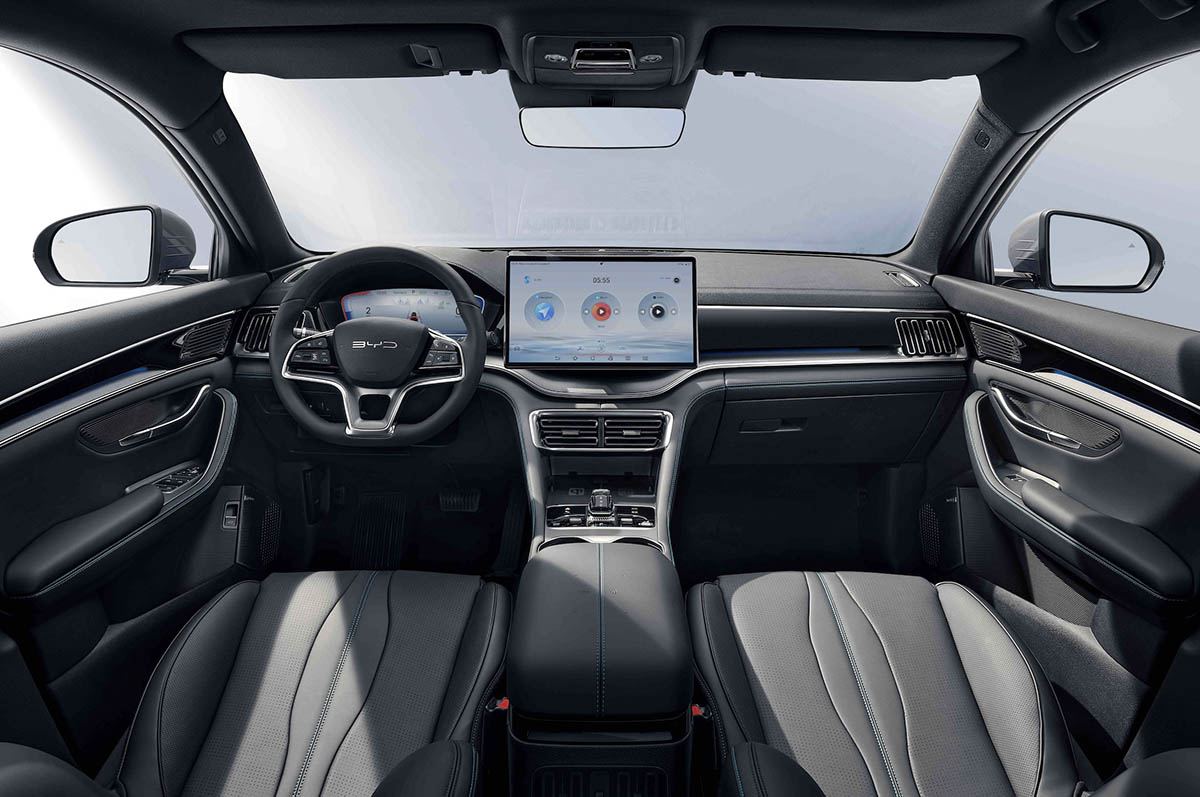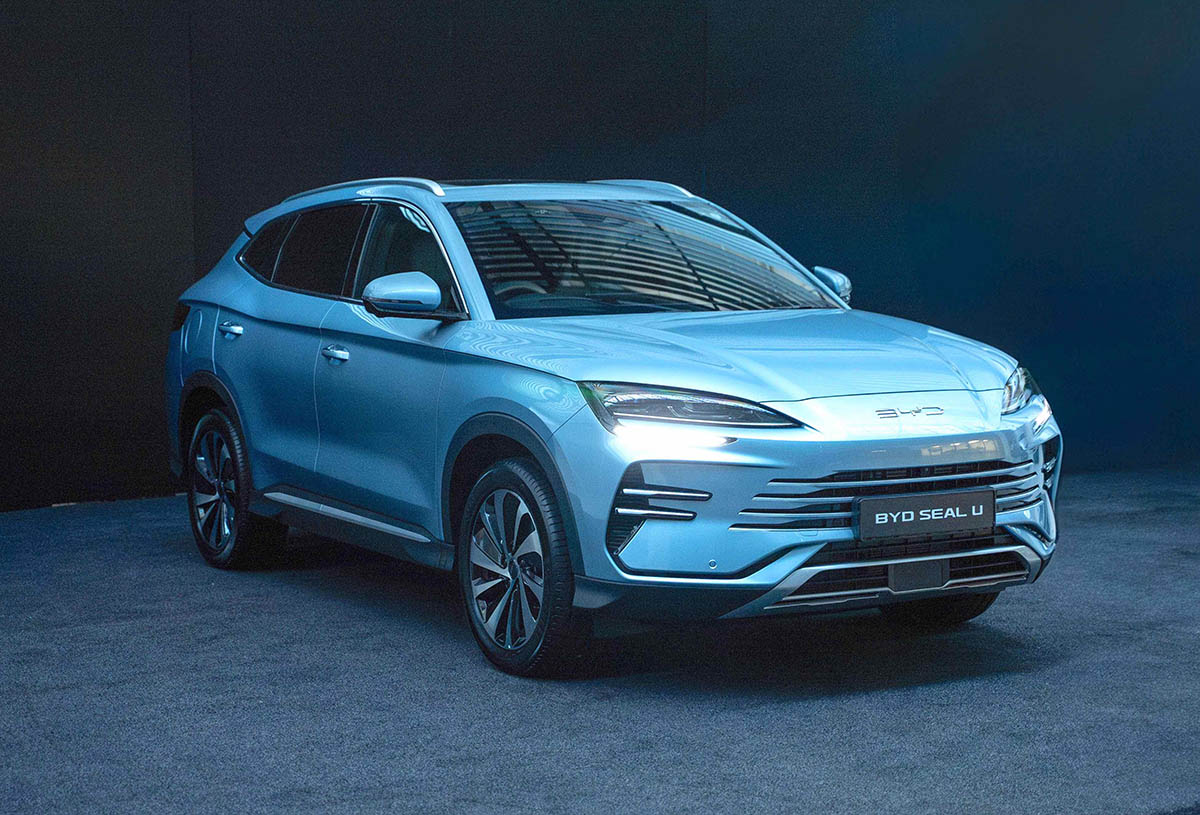Although the BYD Seal U, launched this week, sounds very like the already on sale Seal, they’re very different cars.
The Seal is a saloon EV while the Seal U SUV is BYD’s first PHEV on the Irish market, although they already sell similar vehicles in other countries. In fact, they pointed out that the world’s first mass-produced PHEV was their imaginatively named F3DM, introduced in 2008.
Powered by a DM-i drivetrain, which stands for Dual Mode Intelligence, the Seal U claims a combined range of 1,080km and fuel consumption of 6.4 l/100 km.
Interestingly, there’s just one well-equipped equipment level on offer, but three drivetrain variants, including 4WD on the top model.
All three prioritise electric power over the engine, with the 1.5 litre petrol unit used mainly to charge the battery in the most efficient way possible. When maximum performance is called for, the engine drives the wheels too, along with the electric motors. Performance is strong with a 0-100km/h time of 5.9 seconds and this was borne out on our brief test drive when it proved a sprightly performer.

There are two electric motors in the car, one to provide drive to the wheels, the other used solely as a generator to push power into the battery during regenerative braking. The battery itself a Cobalt free blade unit, mounted in the floor and it has a capacity from 18.3kWh, offering a claimed electric range of up to 80km. DC charging up to 18kW is standard, as is a usefully high 11kW onboard AC charger.
The petrol engine is BYD’S own and it’s designed to maximise fuel economy, offering a thermal efficiency of 43%, notably high for an ICE engine. It’s commendably smooth too, with the switch to petrol from battery power proving almost undetectable. Even when working hard, engine noise is remarkably quiet.
It uses the Atkinson cycle, which differs from the normal Otto cycle in that when fuel is drawn into the cylinder, some of it is allowed out during the compression cycle. How that saves fuel is beyond me but apparently it does. The compression ratio is an almost diesel-like 15.5 and a gearless transmission also contributes to the fuel-sipping properties of the engine.

Equipment, comfort and pricing
Standard equipment across all models is high and includes a 15” central rotating screen, 19” alloys, a panoramic sunroof, vegan leather heated, cooled, electric seats, satnav, Apple CarPlay and Android Auto, air conditioning and purification, keyless entry, ambient lighting, head up display, double layered laminated glass and advanced driver safety systems including Blind Spot Detection, Adaptive Cruise Control, Lane Change Assist and Rear Cross Traffic Alert.
In addition, the car is fitted with V2L tech, allowing it to power external mains devices. In fact the coffee bar at the launch was powered by one of the cars.
On our drive, the car proved more than comfortable with two additional rear seat passengers, who weren’t short of leg room. The cabin itself was pleasingly well-built with nice materials livened up by details including the crystal gear lever, already a feature of the earlier Seal.
There’s a flat floor and a 425 litre boot, which expands to 1,440 litres with the 60:40 seats folded down.
For the moment, there are two models, Boost and Design. Boost, the base version, starts from €42,150 and Design comes with the 4WD powertrain from €49,140.
A six year warranty is augmented by an eight year warranty on the battery.










